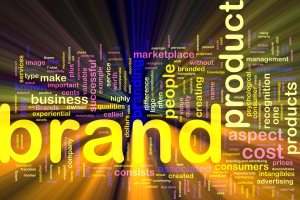The State of Employer Branding Today

In her keynote, Universum President of the Americas, Melissa Murray Bailey, said, “Employer branding is such a new concept for people. The future of how talent and employers are connecting.”
Bailey went on to point out the shifts in how students are perceiving employers and the workforce as a whole. A decade ago, work-life balance was just starting to emerge and education was paramount. Just five years ago, new entrants to the workforce reported wanting to be dedicated to a cause and a friendly work environment.
“We’ve set our targets, and we can see what the best of the best are doing. Now that we have our vision, how do we operationalize that?” Bailey challenged.
Here are some employment branding best practices from some of the world’s largest companies.
NASA- There is no doubt that NASA has always been a magnet for talent. Ten years ago, sharing information and a jobs repository were enough—today NASA’s job site includes social channels with which to connect to the company, video to pull applicants in closer, and options for more personal interaction.
Trends all over point out that despite the standard SEO practices, there are small changes in verbiage that may seem counter intuitive, but bring out the more informal tone that many brands are working toward.
ATT- ATT has a huge history of innovation and is using that to attract “young technical talent” after noticing a reverse bell curve with age in their company. Sustainability and diversity are two of the cornerstones bolstering their college recruiting strategy. ATT defines its own top talent—good GPA, leadership activities in university, some work experience, internship experience—but they recognize that these are not the same qualities that other companies within its industry might select.
“Top talent does not look the same for every organization. It shouldn’t. So while it’s correct to say that “everyone wants the top talent” it’s not completely truthful because it’s not actually the same group of people except in very niche and regional situations.”
Bailey pointed out that once you identify your top talent there are some easy ways to start honing in on your employer brand:
Her suggestion? Select three things that actually make you different and focus all your energy and messaging on those things.
“Otherwise all the companies sound the same. It begins to sound like these so-called benefits are the minimum expectation to work for a decent company,” explained Bailey.
- First, find the threshold that makes your company an okay place to work.
- Then look into what makes your company competitive—that is, what puts you on par with other companies that might want to recruit similar talent to yours.
- Finally, figure out the three things that make your organization distinctive—what is different about your company?
This employer brand isn’t dependent on your consumer brand. Coca-cola is the second most recognized word in the world, David Lee of Amazon pointed out, (second only to ‘okay’) but their employer brand. But Kat Drum from Expedia and Ken Kane from the Work Group said:”An Organization has one brand, it comes from one place. It has the same look, feel and design.”Universum also released its IDEAL Employer Rankings at the conference. Based on a survey of nearly 66,000 undergraduate students, the IDEAL rankings show student sentiment within industries, employers and reveal trends of interest.

